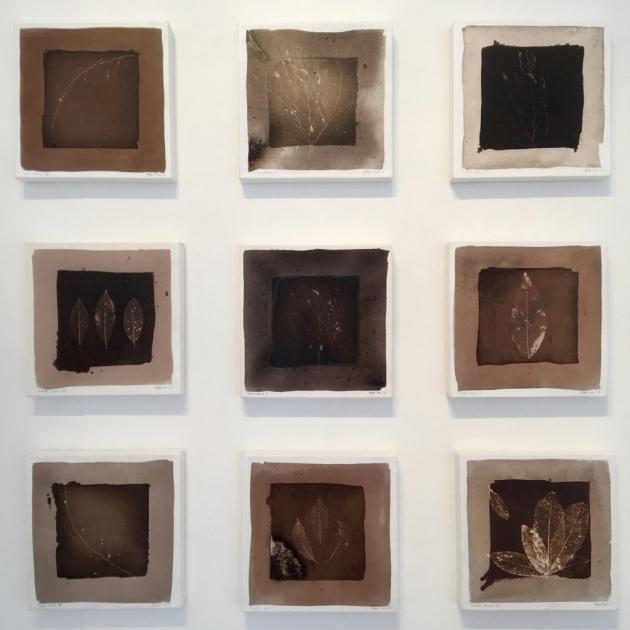In this week's Art Seen, Laura Elliott looks at exhibitions by John Shewry, Annemarie Hope-Cross, and Ellie Gray and Jane Shrifter.
 Small Town Tiki, by John Shewry
''Eclectia'', John Shewry (Art Bay Gallery, Queenstown)
Small Town Tiki, by John Shewry
''Eclectia'', John Shewry (Art Bay Gallery, Queenstown)

Surprising, humorous, poignant, and thought-provoking: welcome to the world of John Shewry's ''Eclectia''. This is art that grabs the viewer's attention with a tongue-in-cheek quirkiness, but behind the surface fun, it very definitely has something to say and it wants to be heard.
Conceptual artist Shewry recycles second-hand paraphernalia to create imagery that carries strong messages about racial discrimination, colonialism, the education system, our ever-increasing culture of consumerism and waste, global war, and personal heartbreak.
Children's toys, old ceramics, knickknacks and road signs, objects that were created to have a purpose and be noticed for a brief time and were later discarded as unwanted trash, are repurposed to add layers of meaning to Shewry's visual commentary.
Thrive and Silence while we learn use plastic dolls to open a discussion about how overwhelming it is to be part of a cultural minority, the fundamental problems in judging one culture by the engrained regulations of another and trying to force conformity.
Chicken Dinner, a glass display box of five-dollar bills and old trophies, questions the ways in which we measure success, the ultimate meaning - or void of meaning - in defining ourselves by accumulated riches and artificial prizes. The most visually simple work,
Time stands still for those that bathe in darkness, also packs one of the strongest emotional punches. A clock, painted black, not working, casting a shadow on its white background, becomes a metaphor for losing all sense of time and self in depression.
 Arboretum, by Annemarie Hope-Cross
''Arboretum: A Portrait of Trees'', Annemarie Hope-Cross (Hullabaloo Art Space, Cromwell)
Arboretum, by Annemarie Hope-Cross
''Arboretum: A Portrait of Trees'', Annemarie Hope-Cross (Hullabaloo Art Space, Cromwell)

Annemarie Hope-Cross is a camera-less photographer, drawing on the techniques and legacy of the past to preserve images of the present. In the 1830s and 1840s, photogenic drawing and cyanotype printing opened entirely new avenues for the reproduction of images.
Paper is hand-coated with chemicals before the specimens are laid directly on the surface; when exposed to sunlight, a negative image appears, which can then be stabilised and fixed permanently with another chemical solution.
Inspired by the surroundings of Christchurch's Avon River, the decay and rejuvenation cycle of winter captured in the skeletons of scattered leaves and trees stripped bare of their coverings, Hope-Cross used those historic processes to create the series of botanical life - and death - portraits in ''Arboretum''.
The result is fascinating. There is a sense of complete timelessness about the works; they could be the record of leaves that grew and sheltered and drifted to the ground centuries ago. In the larger, blue-toned prints such as Trees, II, there is a ghostly eeriness, like branches suddenly becoming visible in complete darkness, caught by moonlight, or criss-crossing like veins on an X-ray.
The series of sepia-toned images on canvas look exactly like antique portraits, the days when family members or company employees might have been brought forward to stand solemnly for what might be the only photograph taken during their lifetime. The plant specimens are granted a semblance of immortality in their portraits, yet still appear fragile and ephemeral.
 Omeo 5, by Ellie Gray
''Reform'', Ellie Gray and ''Before Brekkie'', Jane Shriffer (Gallery Thirty Three, Wanaka)
Omeo 5, by Ellie Gray
''Reform'', Ellie Gray and ''Before Brekkie'', Jane Shriffer (Gallery Thirty Three, Wanaka)

In a perfect pairing, painters Ellie Gray and Jane Shriffer present two sides of abstract art: the geometrical and precise complemented by the emotional and intuitive. Gray's architectural abstraction is a feat of technical skill, a mastery of perspective and contrast, but still invested with soul and energy.
There is a sense of modernity, reminiscent of computer-generated graphics and building blocks, as well as a nod to the fragmented shapes of an earlier generation of abstract artists, with the picture plane seeming to have been shattered into shards of bright colour.
With a focus on the angles, planes and stand-out features of residential buildings, Gray does for architecture what other artists have done for poetry and music, transforming one type of artistic expression into another by re-interpreting it, breaking it down and giving it new visual form on a painted canvas.
If you can almost see the mathematical planning in Gray's work, Shriffer's canvases are a spontaneous expression of thought and feeling - the painting of a mood, the reaction to a moment in time. Being farther down the path of abstraction, the subject of each piece is open to interpretation, but there is a beautiful serenity and distinctive harmony to the collection.
Shriffer excels in her use of colour; there isn't one thick impasto brushstroke or vigorous slash of paint that seems out of place, and paintings such as Time is a Thief encourage endless time spent absorbing the feel of the work and investing it with personal meaning.








![Untitled (c. mid 1990s, [pink 3]), by Martin Thompson, 415mm×590mm. Photo: courtesy of Brett...](https://www.odt.co.nz/sites/default/files/styles/odt_landscape_small_related_stories/public/story/2024/02/untitled_pink_3.jpg?itok=Q0aQrc9o)



